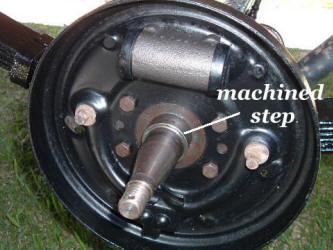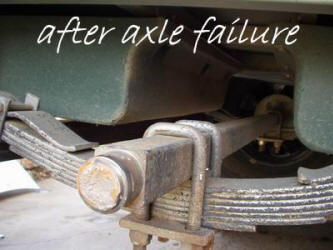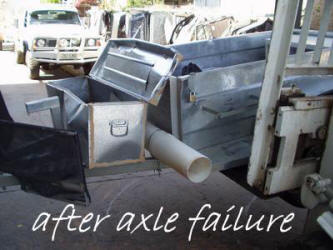|
axle
inspection
I'm not saying that broken
axles are a common event on camper trailers, but I would like to
draw your attention to something that could happen & can easily be
avoided with a proper check.
This check should be included as part of your regular
maintenance schedule & could well prevent a stranding on the side of
the track in the middle of nowhere or a serious accident on the
highway.
It doesn't matter what type of suspension you have, all types
of suspension have been known to break.
Always think safety first & never climb under your camper
trailer when it is supported on stands alone.
safe
jacking
1 park the trailer on firm level ground.
2 block the trailer tires on the opposite side securely so that no
forward or rearward movement is possible.
3 jack up the trailer following the manufacturers instructions.
4 secure the trailer on jack stands of adequate capacity front and
rear.
5 undo the wheel nuts & remove the wheel.
removing
wheel & hub
Please refer to servicing wheel
bearings for the procedure to remove the wheel & hub.
axle
inspection
The area in question is where a 'step' has been machined on
the stub to receive the wheel bearings. This is the most likely
place for a fracture to occur, however it is also important that you
check all machined steps on the stub.
The fracture usually starts on the bottom so it is often not
seen until it is too late. Pay particular attention to all
underneath areas of machined 'steps'.
Another area may also be where the 'weld ring' is welded if
you have brakes on your trailer. You will have to remove the backing
plate to get a better look at this suspect area, usually four or six
bolts, but it will be well worth the effect.
Best way to feel a crack in a machined surface is by running
your finger nail over the area. Not be afraid to get your magnifying
glass out to be sure. An axle failure at highway speeds in not much
fun.




by
Rob
|